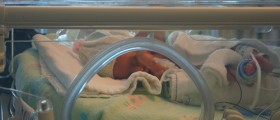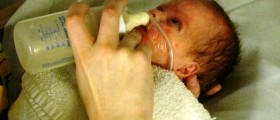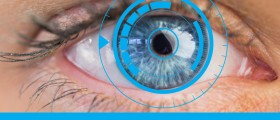
Retinopathy of prematurity (ROP) is an eye disease that affects prematurely born babies. It is characterized by abnormal development of blood vessels in the retina of the eye.
Retinopathy of Prematurity Overview
Retinopathy of prematurity in mild form may resolve spontaneously. However, severe cases of ROP may lead to retinal detachment and blindness due to formation of new blood vessels and require surgical treatment.
Retinopathy of prematurity, formerly known as retrolental fibroplasia, was the major cause of blindness in children in the United States during the 1940s and 1950s. The disease was at first believed to be due to use of oxygen therapy for treatment of lungs in premature infants. However, scientists now know that it is not the only cause of ROP.
Causes of Retinopathy of Prematurity
In the 16th week of gestation, the blood vessels of the retina start to develop and by the 36 weeks of pregnancy this development completes. These blood vessels grow from the center toward the edges of the retina. If an infant is born prematurely, this development is disrupted resulting in abnormal growth of retinal vessels.
Blood vessels of the retina may grow into the vitreous gel, which gives shape to the eye. Retinal vessels may leak and bleed in the eye as they are fragile. Fibrous scar tissue may also form, which pulls the retina from the rest of the eye and may detach it leading to blindness.
Risk Factors for Retinopathy of Prematurity
The factor for retinopathy of prematurity increases the more premature an infant is and the lower the birth weight is. Generally, all infants born before 30 weeks of gestation and weighing less than 3 pounds are at risk of this disease. Use of oxygen therapy for treatment of premature babies is another risk factor for ROP.
Additionally, infants suffering from heart disease, apnea, infections, low oxygen levels in the blood, high carbon dioxide in the blood, respiratory distress, seizures and those undergoing blood transfusions are also at risk of developing retinopathy of prematurity.
Retinopathy of prematurity affects around 50% of all prematurely born babies. However, only small percentage of these infants develop complications of ROP and blindness.
Treatment for Retinopathy of Prematurity
Severity of eye damage depends on the stage of ROP. The disease is classified into five stages. The disease at stage 1 and 2 may clear up without treatment. However, babies with stage 3 and 4 require treatment to prevent further damage to the eye. The most common treatment options for ROP include cryotherapy and laser surgery.

















Your thoughts on this
Loading...